Organizations seek ways to optimize project management and ensure successful delivery. The Project Management Office (PMO) is crucial in this endeavor. It establishes project governance, controls, and best practices to streamline management and align projects with business goals.
A PMO provides a centralized framework for project management. It promotes efficiency, collaboration, and effective decision-making. The PMO aligns project portfolios with strategic goals, ensuring resources go to high-value projects.
Standardized processes and templates enhance consistency across projects. This leads to improved efficiency and quality. The PMO optimizes resource use, mitigates risks, and monitors performance.
By establishing KPIs and conducting audits, the PMO ensures timely, on-budget project delivery. Its scalable framework allows management of various project sizes and complexities. This adaptability meets specific organizational needs.
Understanding PMO functions, best practices, and tools is crucial for effective project management. The role of PMO in driving project success cannot be overstated. Leveraging expert knowledge and innovative methodologies enhances project performance and outcomes.
Key Takeaways
- PMO provides a centralized framework for project management practices, standards, and governance
- Aligns project portfolios with the organization’s strategic goals to maximize ROI
- Establishes standardized project management processes and methodologies for improved efficiency and quality
- Optimizes resource utilization, mitigates project risks, and monitors performance through KPIs and project audits
- Offers a scalable and flexible framework to manage projects of varying sizes and complexities
Understanding the Role of a PMO
Project Management Offices (PMOs) are crucial for efficient project delivery. They streamline processes, align projects with goals, and optimize resources. PMOs provide a central structure for project oversight and promote best practices across teams.
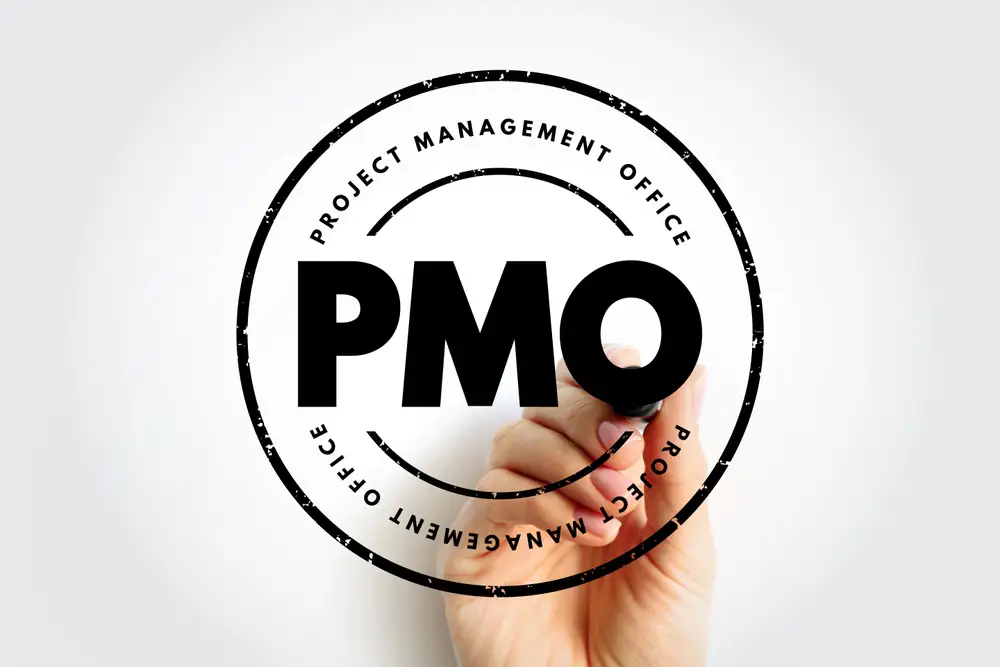
Defining a Project Management Office
A PMO is a dedicated team that manages project activities in an organization. It establishes standards, methodologies, and tools for consistent project management. PMOs support project managers with guidance and resources for successful project delivery.
Recent surveys show 89% of organizations have PMOs, up from 71% in 2016. This increase highlights the growing value of PMOs. Half of surveyed organizations have multiple PMOs, indicating a need for specialized support.
Key Functions and Responsibilities of a PMO
PMO functions vary based on organization size, structure, and project management maturity. Core responsibilities include standardizing methodologies, developing tools, and providing training. They also manage resources, monitor progress, and ensure compliance with policies.
- Standardizing project management methodologies and processes
- Developing and maintaining project management templates, tools, and frameworks
- Providing training and professional development opportunities for project managers
- Facilitating resource allocation and capacity planning
- Monitoring and reporting on project progress and performance
- Identifying and managing project risks and issues
- Ensuring compliance with organizational policies and regulatory requirements
A 2020 PMO survey of 330 companies revealed focus areas for PMOs. “Methods, processes, and tools” and “implementation of projects” received the most attention. Future plans include increased focus on strategic support and resource management.
The PMO’s roles and responsibilities go beyond project execution. They include reporting, resource management, and project prioritization. This holistic approach helps organizations optimize project portfolios and align with strategic goals.
| PMO Function | Current Time Spent | Planned Time Spent |
|---|---|---|
| Methods, processes, and tools | High | Decrease |
| Implementation of projects | High | Decrease |
| Strategic support | Medium | Increase |
| Multi-project management | Medium | Increase |
| Training/coaching | Low | Increase |
| Resource management | Low | Increase |
“PMOs are not just about executing projects; they are about doing the right projects and doing them right.”
PMOs are the backbone of project management in organizations. They provide structure, support, and oversight for successful project delivery. By improving practices and adapting to needs, PMOs drive business growth and competitive advantage.
Difference Between Project, Program & Portfolio Management Office
Project, program, and portfolio management offices play crucial roles in ensuring successful outcomes. They operate at different levels and have distinct responsibilities. Understanding their key differences is vital for effective project management.

A project management office (PMO) supports individual projects. It provides guidance, tools, and resources to project managers. PMOs oversee day-to-day activities to ensure projects are completed on time and within budget.
A program management office (PgMO) coordinates multiple related projects within a program. According to the Project Management Institute (PMI), program management applies knowledge to achieve objectives and obtain unique benefits. Program managers focus on strategic alignment and managing interdependencies between projects.
A portfolio management office (PfMO) aligns projects and programs with organizational strategic objectives. Portfolio managers determine which projects best serve organizational goals. They allocate resources and ensure alignment with business strategies.
“Understanding the roles of project managers, program managers, and portfolio managers is essential for effective project, program, and portfolio management. Misunderstanding these roles can lead to confusion and communication breakdowns that hinder project success.” – PMI
The level of authority varies among these offices. Portfolio management has the highest strategic impact on the organization. PMOs focus on individual projects, while PgMOs manage programs with more resources.
Organizations may establish both a PMO and a PgMO based on their specific needs. This decision depends on the complexity of their project management objectives.
| Management Level | Focus | Key Responsibilities |
|---|---|---|
| Project Management | Individual projects | Project scoping, scheduling, and approvalsResource managementBudget managementRisk managementStatus reporting |
| Program Management | Group of related projects | Creating a master scheduleDeveloping a program-level risk management planEstablishing communication systemsEvaluating projects for redesign or removalFocusing on benefits realization |
| Portfolio Management | Alignment with organizational strategies | Determining which projects best serve organizational goalsPrioritizing projectsResource allocationEnsuring alignment with organizational strategiesContinuous evaluation and adjustment of portfolio composition |
Recognizing the distinct roles of project, program, and portfolio management offices is crucial. This understanding helps organizations structure their approach effectively. It drives success and achieves strategic objectives in project management.
PMO Roles & Responsibilities
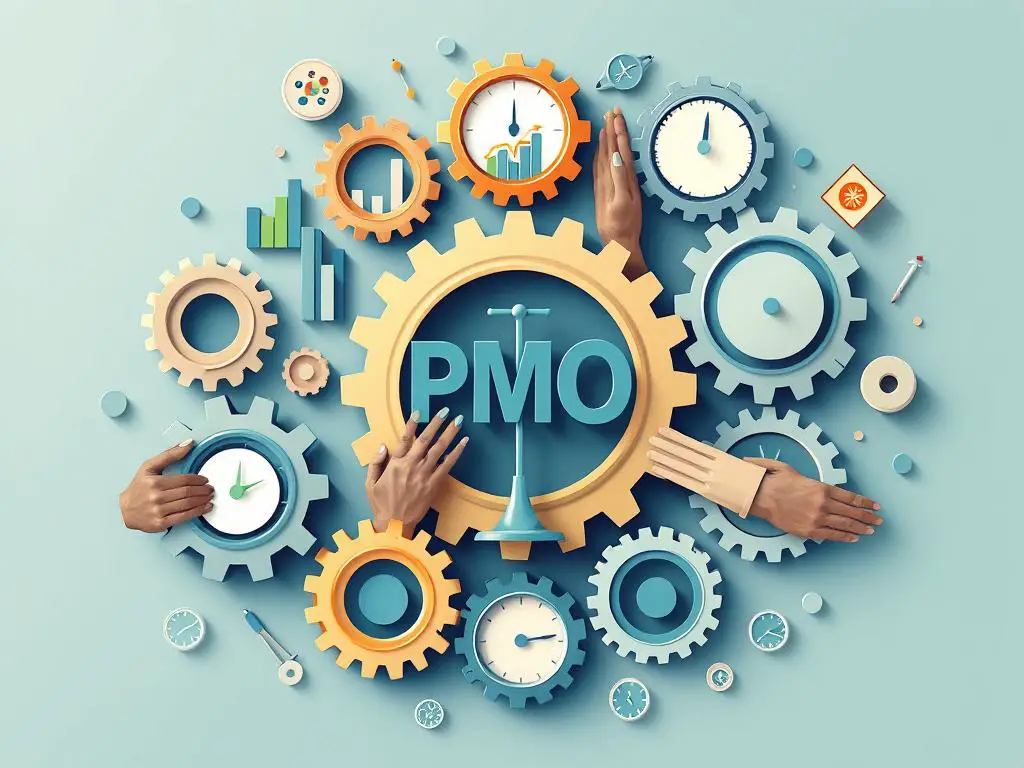
The Project Management Office (PMO) streamlines processes and ensures successful project delivery across organizations. It establishes standardized methodologies, best practices, and governance structures. The PMO guides project managers and teams to plan, execute, and control projects effectively.
A key PMO responsibility is to act as a hub for project information. It fosters collaboration and knowledge sharing among stakeholders. The PMO sets up clear communication channels like status meetings, progress reports, and project dashboards.
The PMO oversees project governance and adherence to established standards. It monitors progress, timelines, and budgets to address deviations or risks. This approach maintains project integrity and ensures timely, on-budget delivery within scope.
Project support is another crucial PMO role. It includes training on best practices, resource allocation, and risk management assistance. The PMO offers expertise to help teams overcome challenges and achieve success.
The PMO conducts project portfolio analysis and prioritization. It evaluates potential projects against strategic objectives and resource constraints. This approach aligns the project portfolio with organizational goals and maximizes value.
“The PMO is not just a support function; it is a strategic partner that drives project success and organizational growth. By providing a framework for project management excellence, the PMO enables organizations to deliver projects faster, reduce costs, and increase value.” – John Smith, Senior PMO Manager
The PMO facilitates project documentation and knowledge management. It maintains a central repository of documents, lessons learned, and best practices. This promotes continuous improvement and enhances the organization’s project management capabilities.
Studies show that 80% of organizations have one or more Project Management Offices. This highlights the growing recognition of PMO value in project management and organizational success.
The PMO serves as a catalyst for project management excellence. It provides structure, support, and governance to ensure project success. Through its diverse roles, the PMO empowers teams to deliver projects that meet expectations.
PMO Types & Structures
Organizations have several options when establishing a Project Management Office (PMO). The chosen structure depends on specific needs, culture, and project management maturity. Understanding different PMO types is crucial for selecting a structure that aligns with organizational goals.

Supportive, Controlling & Directive PMOs
Three main PMO structures exist: supportive, controlling, and directive. Each type varies in control and influence over projects. These structures cater to different organizational needs and project management approaches.
- Supportive PMOs: These provide guidance, templates, best practices, and expertise to project managers. They act as information repositories and offer training without direct project control. Supportive PMOs suit organizations with strong project management cultures and experienced managers.
- Controlling PMOs: These focus on ensuring compliance with established project management tools and processes. They monitor documentation and steps, exercising moderate control over projects. Controlling PMOs are ideal for organizations requiring higher standardization across projects.
- Directive PMOs: These take a hands-on approach, directly managing projects and making decisions. They’re accountable for project success and hold strong organizational positions. Directive PMOs suit organizations with complex projects or those lacking experienced project managers.
A survey reveals that 68% of corporate training attendees agree their organization’s project management competence improved after one year. This underscores the importance of selecting the right PMO structure and providing adequate support.
Choosing the Right PMO Structure for Your Organization
When deciding on a PMO structure, consider factors like size, project complexity, available resources, and desired control level. Assessing project management maturity and identifying improvement areas can help determine the best structure.
Key questions to ask when selecting a PMO structure include:
- Are there bottlenecks in current project management processes?
- Is there a standard project management methodology in place?
- Does the organization run multiple projects simultaneously?
By addressing these questions and aligning the PMO structure with organizational goals, companies can optimize their project management processes. This approach increases the likelihood of project success and enhances overall efficiency.
Benefits of Establishing a PMO
A Project Management Office (PMO) drives project success and optimizes resource management. It enhances decision-making processes by centralizing project management functions. PMOs improve stakeholder engagement and overall organizational efficiency through strategic oversight.

The PMO Offers Guidance
PMOs provide guidance to project teams by establishing standardized processes and best practices. This support helps navigate complex projects more effectively. It ensures consistency and alignment across all initiatives, especially for organizations with large project portfolios.
Helps Keep Projects on Track
The PMO monitors project progress, identifies risks, and facilitates issue resolution. It keeps a close eye on milestones, budgets, and resources. This oversight reduces project delays, cost overruns, and scope creep, contributing to higher success rates.
“Research by PMI shows that having a body overseeing portfolios and strategic value can improve strategic alignment by 23% and portfolio reporting services by 20%.”
PMO has a Big Picture View
With its bird’s-eye view, the PMO aligns projects with strategic goals. It optimizes resource allocation across the organization. The PMO prioritizes initiatives based on value and impact, reducing the likelihood of ‘pet projects’ being chosen.
Improved Project Success Rates
PMOs significantly improve project success rates through enhanced governance, standardization, and oversight. They help deliver projects on time, within budget, and to quality standards. This increased efficiency can lead to cost savings and a competitive edge.
| Benefit | Impact |
|---|---|
| Standardized processes | Improved project consistency and efficiency |
| Risk management | Reduced project delays and cost overruns |
| Strategic alignment | Increased value generation and competitiveness |
Helps with Communications
The PMO serves as a central hub for project-related information. It ensures stakeholders are informed and engaged throughout the project lifecycle. By establishing clear communication channels, the PMO builds trust and alignment among team members and sponsors.
Enhanced Resource Allocation and Utilization
PMOs optimize resource allocation across the organization. They maintain a comprehensive view of resource availability and demand. This helps avoid bottlenecks, reduces resource conflicts, and maximizes value delivered by project teams.
Better Decision-Making and Stakeholder Satisfaction
The PMO supports decision-making by providing insights through portfolio analysis and performance metrics. It tracks key performance indicators and generates regular reports. This enables leadership to make informed decisions, leading to higher stakeholder satisfaction.
“A PMO can establish standard templates and processes for project planning, execution, monitoring and controlling, and closing, ensuring the consistent delivery of projects.”
The benefits of establishing a PMO are far-reaching and significant. PMOs drive project success and organizational efficiency through guidance and resource optimization. They play a crucial role in enhancing decision-making and stakeholder satisfaction.
Implementing a PMO: Best Practices & Strategies
Implementing a Project Management Office (PMO) demands careful planning and execution. A robust PMO strategy should align with your organization’s goals. Focus on change management and organizational alignment to streamline project processes. This approach drives business success and ensures PMO implementation effectiveness.

Gaining executive support is crucial for PMO implementation success. A PM Solutions survey shows 85% of companies had a PMO in 2016, up from 47% in 2000. This growth highlights PMOs’ increasing value. Engage stakeholders early and showcase PMO benefits to build a strong foundation.
Customize your PMO approach to fit your organization’s unique needs and culture. Tailor processes, methodologies, and tools to resonate with your team. This ensures desired results and effective implementation.
Understanding project, program, and portfolio management differences helps structure your PMO effectively. This article provides insights on mastering these management levels. Utilize this knowledge to create a well-organized PMO structure.
Establishing robust project management processes is critical for PMO implementation. Standardizing practices ensures consistency, efficiency, and better outcomes across projects. Consider these revealing statistics:
- Only 6% of PMOs comply in more than 80% of their completed projects.
- 30% of PMOs comply in at least half of their completed projects.
- 64% of PMOs comply in less than half of their completed projects.
These numbers emphasize the importance of implementing best practices. Continuous monitoring of compliance is crucial to drive project success. Regular evaluations help maintain high standards and improve outcomes.
“Among organizations that place a high priority on a culture of project management, 71% of projects met their goals versus 52% among companies that place a low priority on this culture.”
Foster collaboration and communication among project teams and stakeholders. Promote transparency and knowledge sharing to break down silos. This approach facilitates problem-solving and ensures alignment towards common goals.
Provide adequate training and support to project managers and team members. This ensures effective adoption of PMO practices. Continuously educate your team to keep them updated on best practices.
Regularly evaluate the PMO’s performance and make necessary improvements. This ensures continuous evolution and alignment with changing organizational needs. Track key performance indicators (KPIs) to measure success:
| KPI | Description |
|---|---|
| Project Success Rate | Percentage of projects completed on time, within budget, and meeting quality standards |
| Resource Utilization | Efficiency of resource allocation and utilization across projects |
| Stakeholder Satisfaction | Level of satisfaction among project stakeholders, including clients and executives |
| ROI | Return on investment for the PMO, demonstrating its value to the organization |
Monitor these KPIs and make data-driven decisions to optimize your PMO’s performance. This approach ensures the PMO remains a valuable asset to your organization. Continuous improvement is key to long-term success.
PMO & Project Management Methodologies
The Project Management Office (PMO) is vital for aligning projects with strategic goals. It ensures successful delivery by adapting to various methodologies like Agile and Waterfall. This flexibility supports diverse project requirements and organizational cultures.
Integrating Agile & Waterfall Methodologies with PMO Processes
PMOs can thrive in both Agile and Waterfall environments by tailoring their approaches. In Agile settings, PMOs support adoption and provide frameworks. They ensure Agile projects align with organizational objectives.
Waterfall environments see PMOs in a more controlling role. They enforce project management standards and ensure adherence to the Waterfall methodology. Integrating both methodologies requires flexibility and customized processes.
By using hybrid methodologies, PMOs can support projects of varying complexity. This approach maintains a consistent framework for project management across the organization.

| Methodology | Key Characteristics | PMO Role |
|---|---|---|
| Agile | Iterative, flexible, collaboration-focused | Supportive, facilitating Agile adoption |
| Waterfall | Sequential, structured, documentation-heavy | Controlling, enforcing standards and adherence |
| Hybrid | Combines elements of Agile and Waterfall | Adaptable, customizing processes and governance |
Adapting PMO Approaches to Fit Organizational Culture
Successful PMO implementation requires adapting to the organization’s culture. The PMO should align with company values, communication styles, and decision-making processes. This ensures seamless integration and maximizes project success.
“Adapting the PMO’s approach to fit the organizational culture is not just a nice-to-have; it’s a critical success factor for the PMO’s long-term effectiveness and sustainability.”
To achieve this alignment, the PMO should:
- Assess the organization’s culture and identify key characteristics that impact project management
- Engage stakeholders to understand their expectations and preferences for project management processes
- Develop a flexible and adaptable PMO framework that can be customized to suit different project types and cultural nuances
- Foster a culture of continuous improvement, encouraging feedback and iterative refinements to PMO processes and methodologies
By embracing organizational culture, the PMO becomes a valuable strategic partner. It drives project success and organizational growth in an ever-changing business landscape.
PMO Metrics & Performance Evaluation
Measuring a Project Management Office’s (PMO) performance is crucial for showcasing its value and driving improvement. By tracking key indicators, organizations ensure their PMO delivers results and contributes to business goals. This approach helps demonstrate the PMO’s impact on overall success.
Gartner emphasizes that PMO leaders need accurate metrics to report activities and demonstrate value. Many PMOs struggle to communicate their worth, often seen as bureaucratic entities. To address this, PMOs should tailor metrics to show how they enhance business performance and identify growth opportunities.
Key Performance Indicators (KPIs) for PMOs
PMO performance metrics fall into two main categories: internal effectiveness and project output. Key indicators for evaluating PMO performance include:
- Project completion rates
- Project success rates
- Project completion time
- Resource optimization
- Risk management
- Types of projects
Budget management is vital for monitoring costs and ensuring projects stay within initial budgets. Fostering efficiency within the PMO boosts project success. Project portfolio management KPIs can be tailored to specific organizational needs, objectives, and stakeholder expectations.
“Measuring the effectiveness of a PMO is crucial for its continuous improvement and demonstrating its value to the organization.” – PMO Expert
Measuring PMO Success and Return on Investment (ROI)
Key PMO performance indicators include ROI, cost savings, challenge management, and cycle time. Surveying project workers and customers provides insights into the PMO’s value delivery and satisfaction levels. Organizations that measure PMO effectiveness often see improved project performance and gain competitive advantages.
Consider factors like organization size and project complexity when selecting KPIs to track. Start with a small set of metrics to maintain focus on critical areas. PMtech Digital Solutions offers Project Portfolio Management services to help optimize project selection, management, and execution.
| Financial Performance Metrics | Description |
|---|---|
| Return on Investment (ROI) | Measures the financial benefits generated by the PMO relative to its costs |
| Earned Value (EV) | Compares the planned work with the actual work completed |
| Cost Savings | Evaluates the PMO’s ability to reduce project costs and optimize resource utilization |
| Cost Performance Index (CPI) | Measures the cost efficiency of projects managed by the PMO |
| Schedule Variance (SV) | Compares the planned schedule with the actual progress of projects |
| Cost Variance (CV) | Compares the planned budget with the actual costs incurred |
Aligning PMO metrics with organizational goals is essential for effective performance evaluation. Using PPM software like Triskell centralizes data management, enabling PMOs to efficiently track KPIs and improve decision-making through data analysis.
PMO’s Role in Stakeholder Management & Communication
Effective stakeholder management is crucial for project success. The Project Management Office (PMO) facilitates stakeholder engagement as a central point of contact. It establishes clear communication channels, understands stakeholders’ needs, and manages their expectations throughout the project lifecycle.
The PMO supports stakeholder management by identifying key players and analyzing their influence. It develops targeted communication and engagement strategies. This process involves listing potential stakeholders, categorizing them, and prioritizing their impact on the project.
To ensure effective project communication, the PMO creates a comprehensive plan. This outlines the frequency, format, and content for each stakeholder group. The PMO organizes regular meetings, updates, and feedback sessions to keep stakeholders involved.
“The single biggest problem in communication is the illusion that it has taken place.” – George Bernard Shaw
Managing stakeholder expectations is another critical aspect of the PMO’s role. The PMO establishes clear objectives and provides regular updates. It involves stakeholders in decision-making and manages scope changes to align expectations with project goals.
Some common causes of PMO stakeholder conflicts include:
- Mismatched priorities
- Unclear decision ownership
- Limited resources
- Communication breakdowns
- Personality clashes
To resolve conflicts, the PMO identifies root causes and increases transparency. It facilitates compromise through open discussion and seeks to improve cross-stakeholder collaboration continually.
| PMO Stakeholder | Role in Project | Communication Strategy |
|---|---|---|
| Executive Leaders | Provide strategic direction and resources | Monthly executive briefings and status reports |
| Project Sponsors | Champion the project and secure funding | Bi-weekly meetings and progress updates |
| Project Managers | Plan, execute, and monitor project activities | Daily stand-ups and weekly status meetings |
| Business Analysts | Gather requirements and analyze business needs | Regular workshops and requirement review sessions |
| Subject Matter Experts | Provide domain-specific knowledge and guidance | Ad-hoc consultations and technical reviews |
| Customers/Clients | Define project requirements and accept deliverables | Periodic progress demos and user acceptance testing |
The PMO fosters a collaborative and transparent environment, building trust among project stakeholders. This leads to improved project outcomes and stakeholder satisfaction. Effective management and communication are essential for delivering successful projects aligned with organizational goals.
Knowledge Management & Continuous Improvement in PMOs
Effective knowledge management and continuous improvement are crucial for Project Management Offices (PMOs) in today’s fast-paced business world. PMOs capture, share, and leverage knowledge to drive innovation and enhance project performance. They play a vital role in optimizing project management practices.
A recent study in the International Journal of Managing Projects in Business highlighted PMOs as facilitators of continuous improvement. The research involved 15 semi-structured interviews within a multinational engineering and project management organization. It examined PMOs’ role in transferring knowledge with varying levels of articulability.
Capturing & Sharing Lessons Learned
A key function of PMOs is capturing and sharing lessons from completed projects. They create a valuable knowledge repository by documenting successes, challenges, and insights throughout the project lifecycle. This process helps organizations avoid repeating mistakes and build on proven best practices.
PMOs can implement various strategies to capture lessons learned effectively. These include conducting post-project reviews, encouraging teams to document experiences, using knowledge management tools, and facilitating knowledge-sharing sessions. Such practices contribute to continuous improvement in project management and organizational learning.
Fostering a Culture of Organizational Learning
PMOs are crucial in fostering a culture of organizational learning. They create an environment valuing continuous improvement and innovation by encouraging open communication and collaboration. This approach empowers project teams to embrace new ideas and challenge existing processes.
To cultivate a learning culture, PMOs can promote cross-functional collaboration and knowledge exchange. They can also encourage experimentation, recognize contributions to knowledge sharing, and provide training opportunities. These practices enhance project management skills and drive innovation.
| PMO Knowledge Management Practices | Benefits |
|---|---|
| Capturing and sharing lessons learned | Avoids repeating past mistakes and builds upon best practices |
| Implementing knowledge management tools and platforms | Facilitates easy access to project-related knowledge and insights |
| Encouraging open communication and collaboration | Promotes knowledge sharing and fosters a learning culture |
| Providing training and development opportunities | Enhances project management skills and competencies |
The role of PMOs in driving knowledge management and continuous improvement is becoming increasingly critical. By harnessing knowledge management and fostering organizational learning, PMOs help companies stay competitive. This approach ensures sustainable success in the ever-evolving landscape of project management.

PMO & Risk Management Strategies
Risk management is crucial for project success. The Program Management Office (PMO) facilitates effective risk management practices. It establishes robust frameworks, processes, and tools for systematic risk identification, assessment, and mitigation.
The PMO conducts regular risk assessments, evaluating likelihood and impact. It prioritizes risks based on potential consequences. This proactive approach allows project teams to develop targeted mitigation strategies early on.
Identifying & Mitigating Project Risks
Effective risk identification is key to successful risk management. The PMO collaborates with project teams to identify potential risks across various categories. These include technology, operational, cost, and regulatory risks.
- Technology risks
- Operational risks
- Cost risks
- Regulatory risks
PMOs leverage their expertise to help organizations identify and oversee diverse risk sources. They work with project teams to develop tailored mitigation strategies. This ensures risks are effectively managed throughout the project lifecycle.
Developing Effective Risk Management Frameworks
The PMO develops comprehensive risk management frameworks for consistent practices. These define risk categories, establish assessment criteria, and create standardized response plans. Clear guidelines and training promote a culture of risk awareness.
Effective frameworks emphasize regular communication and reporting. The PMO ensures stakeholders are aware of key risks and mitigation actions. This transparency allows for well-informed decision-making at every project stage.
The PMO continuously monitors and evaluates risk management strategies. It makes necessary adjustments based on lessons learned and best practices. Key performance indicators (KPIs) help ensure the approach remains agile and adaptable.
“Incorporating risk management through PMO services equips organizations to withstand unforeseen obstacles without major disruptions of service, lost data, or diminished business operations.” – PMO Expert
The PMO’s risk strategies build resilient and successful projects. They foster a culture of risk awareness and help organizations navigate project complexities. Effective risk management significantly contributes to project success, enabling informed decisions and smooth execution.
The Future of PMOs: Trends & Innovations
PMOs must adapt to stay ahead in the evolving project management landscape. Emerging trends and innovations are reshaping how we manage projects and drive success. Let’s explore key PMO trends shaping the future of project management.
Agile and hybrid methodologies are gaining traction in project management. Traditional waterfall approaches no longer suffice for complex, fast-paced projects. PMOs are embracing agile practices to deliver value faster and respond to change effectively.
Integrating agile with traditional practices, PMOs achieve better outcomes and drive innovation. This approach fosters collaboration among teams and enhances project success rates.
AI and machine learning are revolutionizing PMOs through predictive analytics. These tools leverage data and advanced algorithms to gain insights into project performance. They help identify potential risks and enable data-driven decision-making.
AI-powered solutions optimize resource allocation and forecast project outcomes. This trend underscores technology’s growing importance in project management and the need for digital transformation.
“The future belongs to those who believe in the beauty of their dreams.” – Eleanor Roosevelt
The COVID-19 pandemic has drastically impacted remote work environments and PMOs. This shift accelerated the adoption of cloud-based project management tools and collaboration platforms. PMOs now invest in upskilling their workforce to thrive in this new reality.
Virtual collaboration has become essential for maintaining project momentum. PMOs are adapting quickly to ensure business continuity and foster a culture of remote teamwork.
| PMO Trend | Impact on Project Management |
|---|---|
| Agile and Hybrid Methodologies | Faster value delivery, improved flexibility, and enhanced collaboration |
| AI and Machine Learning | Predictive analytics, optimized resource allocation, and improved decision-making |
| Remote Work Environments | Accelerated adoption of cloud-based tools, virtual collaboration, and upskilling of workforce |
| Strategic Alignment | Enhanced project selection, prioritization, and alignment with business goals |
| Knowledge Management | Improved capture and leveraging of project-related data for continuous improvement |
PMOs will continue to foster innovation and adopt best practices from various industries. Embracing continuous improvement keeps PMOs at the forefront of project management trends. The future of PMOs lies in agility, adaptability, and strategic thinking.
Leveraging technology and data is crucial for delivering value and driving digital transformation. PMOs must stay ahead of these trends to position themselves for success.
- Embrace agile and hybrid methodologies
- Leverage AI and machine learning for predictive analytics
- Adapt to remote work environments and invest in upskilling
- Focus on strategic alignment and change management
- Prioritize knowledge management and continuous improvement
PMOs that navigate these trends will drive organizational success in an ever-changing business landscape. They’ll be well-positioned to deliver value and adapt to future challenges.
Conclusion
Organizations that prioritize project management success are well-positioned to achieve superior performance. A Project Management Office (PMO) creates a centralized hub for best practices, governance, and strategic alignment. This enables companies to streamline execution, enhance consistency, and make data-driven decisions.
The PMO’s impact goes beyond project support. It optimizes resource allocation, mitigates risks, and fosters continuous improvement. Implementing a PMO requires careful planning to align with organizational goals and culture.
Studies show PMOs can reduce project failures by 20% and increase productivity by 15%. They can also boost team efficiency by up to 30%. These rewards make PMO implementation worthwhile for many organizations.
PMOs must remain agile and adaptable in the evolving business world. Embracing new technologies and agile methodologies helps PMOs deliver greater value. Focusing on strategic initiatives is crucial for organizational growth.
Fostering collaboration and knowledge sharing is key to PMO success. The true measure of a PMO’s worth lies in its alignment with corporate objectives. Its ability to drive project management success contributes significantly to overall organizational performance.
Frequently Asked Questions
What is a Project Management Office (PMO)?
A Project Management Office (PMO) is a central department overseeing project management activities. It guides and supports project managers and teams. The PMO provides governance and resources to ensure successful project delivery.
What are the key functions and responsibilities of a PMO?
PMOs standardize project management methodologies and processes. They develop and maintain templates, tools, and frameworks. PMOs offer training for project managers and facilitate resource allocation. They also assist with capacity planning across projects.
How does a PMO differ from project, program, and portfolio management?
Project management focuses on individual projects. Program management oversees related projects. Portfolio management aligns projects with strategic objectives. PMOs support projects, programs, or portfolios depending on their scope.They optimize overall project portfolios to maximize value. PMOs ensure alignment with business goals across all levels of project management.
What are the benefits of establishing a PMO?
PMOs improve project success rates through enhanced governance and oversight. They foster better communication among stakeholders. PMOs optimize resource allocation and utilization. They support decision-making with portfolio analysis and performance metrics.
What are the different types of PMO structures?
There are three main PMO types: supportive, controlling, and directive. Supportive PMOs provide guidance and expertise to project managers. Controlling PMOs enforce standards and governance. Directive PMOs directly manage projects and decision-making.
How can a PMO be implemented successfully?
Successful PMO implementation starts with clear objectives aligned to strategic goals. Gaining executive support is crucial. Customize the PMO approach to fit organizational needs. Establish robust processes and tools.Foster collaboration and communication. Provide adequate training and support for staff. Regular evaluation and adjustment ensure ongoing PMO effectiveness.
How does a PMO work with different project management methodologies like Agile and Waterfall?
PMOs adapt their approaches to support both Agile and Waterfall methodologies. In Agile, PMOs play a supportive role, facilitating adoption. They ensure Agile projects align with organizational goals. In Waterfall, PMOs may have a more controlling role.They enforce project management standards and ensure adherence to the methodology. PMOs can bridge the gap between different methodologies within an organization.
How can the effectiveness of a PMO be measured?
PMO effectiveness is measured using Key Performance Indicators (KPIs). These include project success rates, resource utilization, and stakeholder satisfaction. Project cycle time is another important metric. Regular tracking of PMO performance enables data-driven decision-making.
What role does a PMO play in stakeholder management and communication?
PMOs facilitate stakeholder engagement by establishing clear communication channels. They ensure stakeholders’ needs are understood and expectations are managed. PMOs act as a central point of contact for project stakeholders.They facilitate timely and transparent communication. This keeps everyone informed and aligned throughout the project lifecycle.
How does a PMO support knowledge management and continuous improvement?
PMOs capture lessons learned, best practices, and project documentation. They share this knowledge to avoid repeating past mistakes. PMOs support continuous improvement by reviewing project outcomes. They identify areas for enhancement and implement changes to processes and tools.





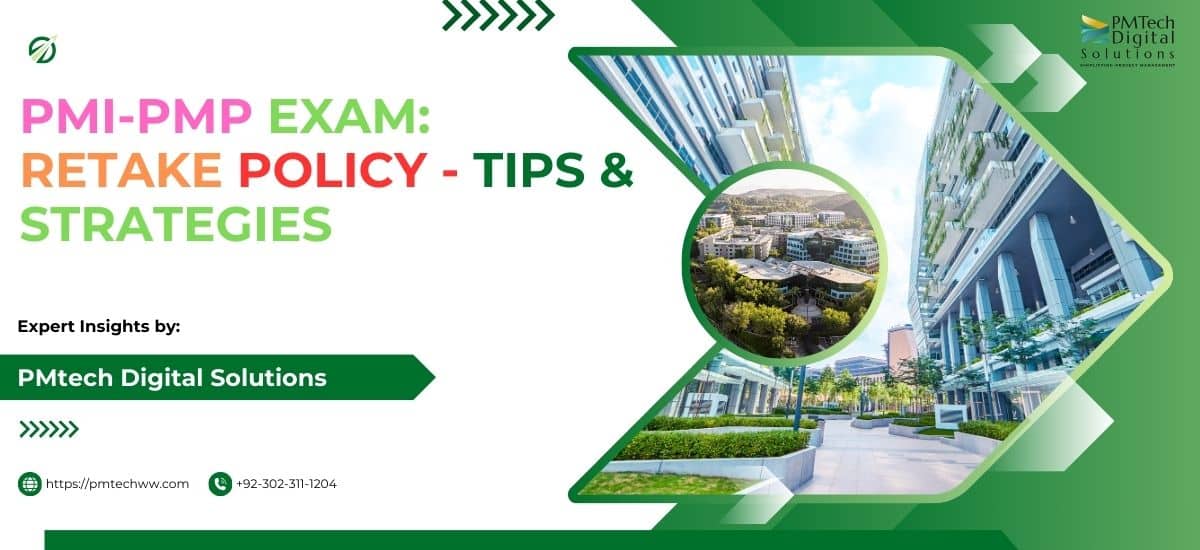
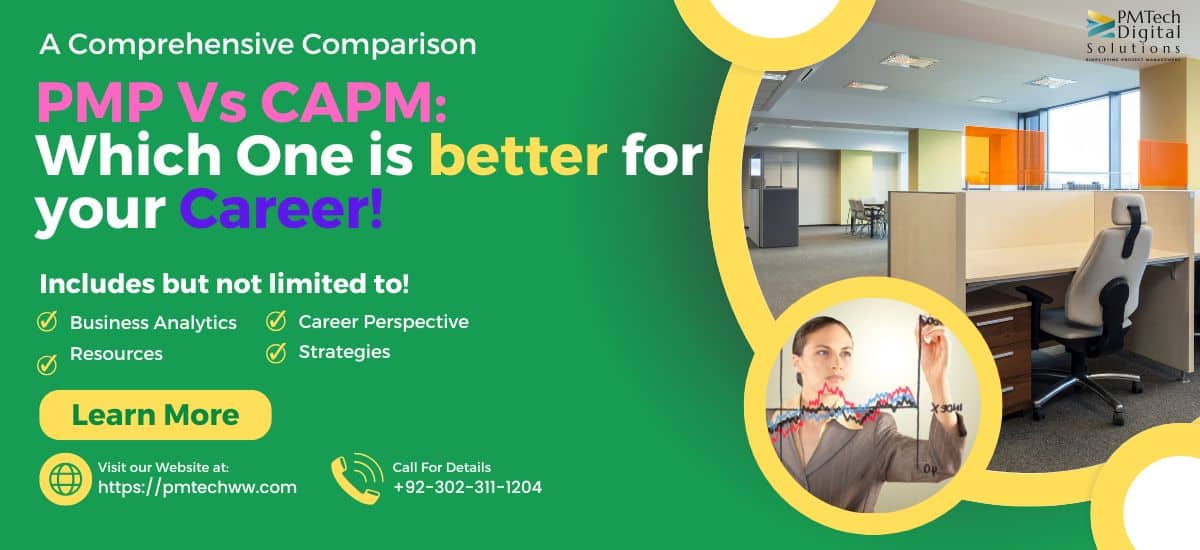





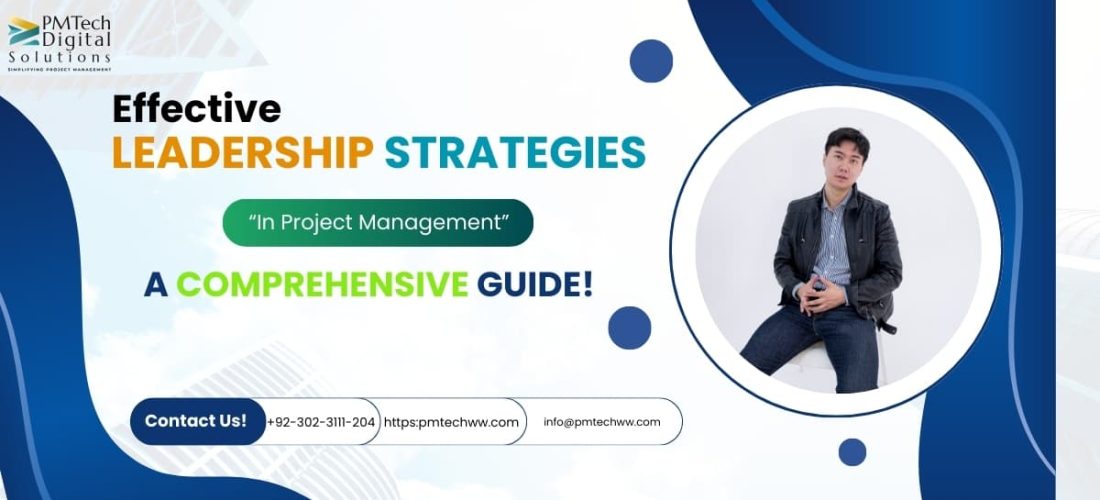
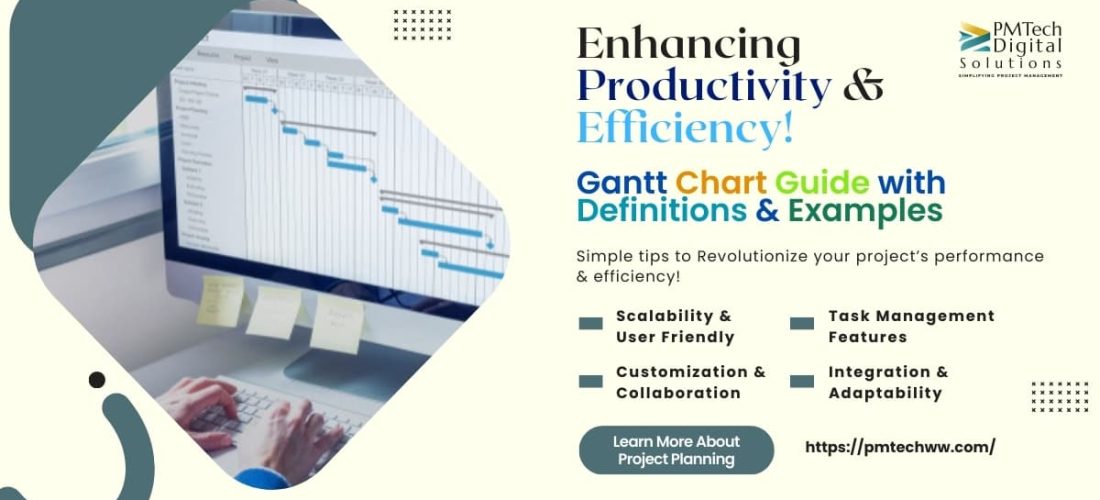



117 Responses
Your point of view caught my eye and was very interesting. Thanks. I have a question for you.
Your article helped me a lot, is there any more related content? Thanks!
I am really inspired along with your writing talents and also with the structure for your weblog. Is this a paid subject matter or did you customize it your self? Anyway keep up the nice high quality writing, it is uncommon to see a nice blog like this one these days!
Thank you for your sharing. I am worried that I lack creative ideas. It is your article that makes me full of hope. Thank you. But, I have a question, can you help me?
аккаунты с балансом маркетплейс для реселлеров
маркетплейс аккаунтов купить аккаунт
аккаунты с балансом покупка аккаунтов
купить аккаунт https://ploshadka-prodazha-akkauntov.ru/
продать аккаунт покупка аккаунтов
купить аккаунт с прокачкой аккаунт для рекламы
магазин аккаунтов платформа для покупки аккаунтов
Account Buying Platform Account Sale
Buy accounts Gaming account marketplace
Website for Buying Accounts Online Account Store
Buy and Sell Accounts Account Trading Service
Accounts marketplace Accounts for Sale
Account Market Buy Account
Verified Accounts for Sale Account Selling Platform
Account Catalog Social media account marketplace
Guaranteed Accounts Buy accounts
Account exchange Gaming account marketplace
sell pre-made account account selling service
account exchange service website for selling accounts
account purchase buy pre-made account
buy accounts account buying platform
account buying platform account acquisition
account exchange service buy and sell accounts
purchase ready-made accounts guaranteed accounts
profitable account sales account marketplace
secure account purchasing platform marketplace for ready-made accounts
account buying platform https://accounts-marketplace.org/
buy pre-made account secure account purchasing platform
account buying platform sell accounts
website for buying accounts account store
database of accounts for sale verified accounts for sale
marketplace for ready-made accounts https://accounts-for-sale.org
account purchase buy and sell accounts
account market account trading
account trading https://best-social-accounts.org/
account catalog accounts market
account buying platform social media account marketplace
account selling service database of accounts for sale
online account store accounts-market-soc.org
website for buying accounts account buying platform
database of accounts for sale profitable account sales
guaranteed accounts buy accounts
secure account sales guaranteed accounts
account exchange service account selling service
sell accounts accounts-offer.org
secure account purchasing platform account market
sell account https://buy-best-accounts.org
account marketplace https://social-accounts-marketplaces.live
account exchange service account marketplace
account buying service https://social-accounts-marketplace.xyz
account acquisition https://buy-accounts.space
social media account marketplace buy accounts
account exchange service https://buy-accounts.live
website for buying accounts https://social-accounts-marketplace.live/
account trading platform https://accounts-marketplace.online
buy account https://accounts-marketplace-best.pro
покупка аккаунтов https://akkaunty-na-prodazhu.pro
маркетплейс аккаунтов rynok-akkauntov.top
маркетплейс аккаунтов https://kupit-akkaunt.xyz/
купить аккаунт https://akkaunt-magazin.online
маркетплейс аккаунтов маркетплейсов аккаунтов
маркетплейс аккаунтов kupit-akkaunty-market.xyz
купить аккаунт akkaunty-optom.live
маркетплейс аккаунтов https://online-akkaunty-magazin.xyz
маркетплейс аккаунтов соцсетей akkaunty-dlya-prodazhi.pro
купить аккаунт https://kupit-akkaunt.online/
buy a facebook ad account buy facebook profiles
buy aged fb account https://buy-ad-accounts.click/
buy a facebook account buy facebook ads manager
buy facebook advertising accounts https://buy-ads-account.click
facebook accounts for sale https://ad-account-buy.top
buy fb ad account https://buy-ads-account.work/
buy a facebook account buy fb account
cheap facebook advertising account facebook ads account for sale
buy facebook old accounts ad-accounts-for-sale.work
buy google ads threshold account buy google ads account
buy google ads invoice account https://buy-ads-accounts.click
buy facebook ads manager buy-accounts.click
buy google ads accounts buy google ads invoice account
buy google ads accounts https://ads-account-buy.work
google ads accounts for sale sell google ads account
buy google ad account https://buy-account-ads.work
google ads account seller buy google ads threshold accounts
old google ads account for sale https://sell-ads-account.click
google ads reseller https://ads-agency-account-buy.click
buy facebook business manager account https://buy-business-manager.org
google ads reseller https://buy-verified-ads-account.work
buy business manager account https://buy-bm-account.org/
facebook bm for sale https://buy-verified-business-manager-account.org/
buy facebook business manager https://buy-verified-business-manager.org/
facebook bm buy https://business-manager-for-sale.org/
buy facebook verified business manager https://buy-business-manager-verified.org
buy fb bm https://buy-bm.org/
business manager for sale verified-business-manager-for-sale.org
verified business manager for sale buy verified facebook
buy tiktok ads account https://buy-tiktok-ads-account.org
tiktok ads agency account buy tiktok ads
buy tiktok ads https://tiktok-ads-account-for-sale.org
buy tiktok ads account https://tiktok-agency-account-for-sale.org
buy tiktok ads https://buy-tiktok-ad-account.org
buy tiktok ads account https://buy-tiktok-ads-accounts.org
buy tiktok business account https://tiktok-ads-agency-account.org
tiktok ad accounts https://buy-tiktok-business-account.org
buy tiktok ads accounts https://buy-tiktok-ads.org
facebook account sale marketplace for ready-made accounts buy and sell accounts
buy facebook ads account secure account sales account trading platform
I just like the helpful information you provide in your articles
Every sentence here adds value.
Excellent results, perfect for our busy Manhattan lifestyle. Will recommend to neighbors. Grateful for the service.
Can you be more specific about the content of your article? After reading it, I still have some doubts. Hope you can help me. https://www.binance.info/cs/register?ref=S5H7X3LP
I don’t think the title of your article matches the content lol. Just kidding, mainly because I had some doubts after reading the article.
Thanks for sharing. I read many of your blog posts, cool, your blog is very good.
I started taking https://www.cornbreadhemp.com/products/cbd-sleep-gummies a smidgin while ago well-grounded to observe what the hype was prevalent, and fashionable I in reality look cheeky to them preceding the time when bed. They don’t left me abroad or anything, but they gain it so much easier to chill and fall asleep naturally. I’ve been waking up sensibility feature more rested and not sluggish at all. Unequivocally, kind of disposition I’d tried them sooner.